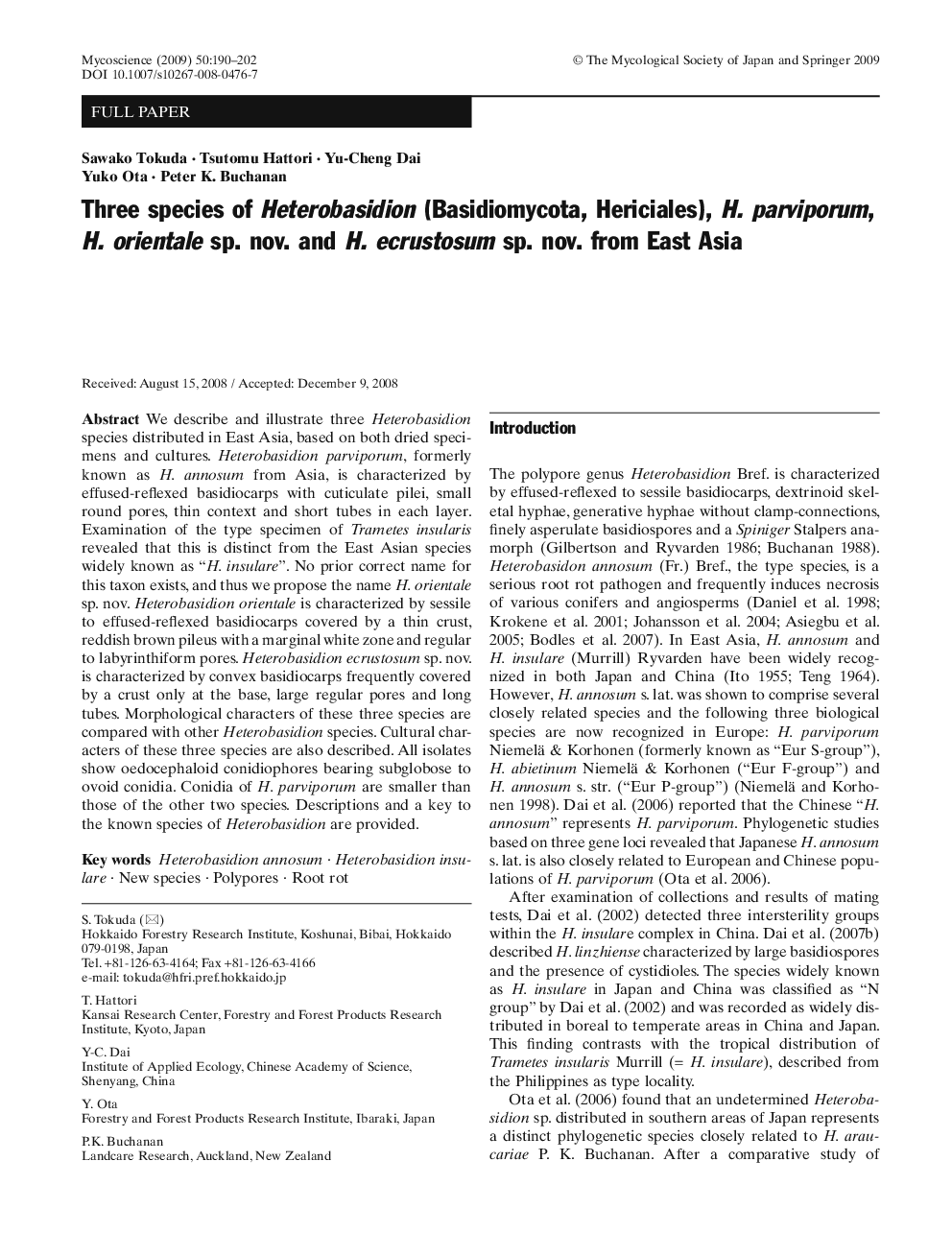| Article ID | Journal | Published Year | Pages | File Type |
|---|---|---|---|---|
| 2060562 | Mycoscience | 2009 | 13 Pages |
We describe and illustrate three Heterobasidion species distributed in East Asia, based on both dried specimens and cultures. Heterobasidion parviporum, formerly known as H. annosum from Asia, is characterized by effused-reflexed basidiocarps with cuticulate pilei, small round pores, thin context and short tubes in each layer. Examination of the type specimen of Trametes insularis revealed that this is distinct from the East Asian species widely known as “H. insulare”. No prior correct name for this taxon exists, and thus we propose the name H. orientale sp. nov. Heterobasidion orientale is characterized by sessile to effused-reflexed basidiocarps covered by a thin crust, reddish brown pileus with a marginal white zone and regular to labyrinthiform pores. Heterobasidion ecrustosum sp. nov. is characterized by convex basidiocarps frequently covered by a crust only at the base, large regular pores and long tubes. Morphological characters of these three species are compared with other Heterobasidion species. Cultural characters of these three species are also described. All isolates show oedocephaloid conidiophores bearing subglobose to ovoid conidia. Conidia of H. parviporum are smaller than those of the other two species. Descriptions and a key to the known species of Heterobasidion are provided.
